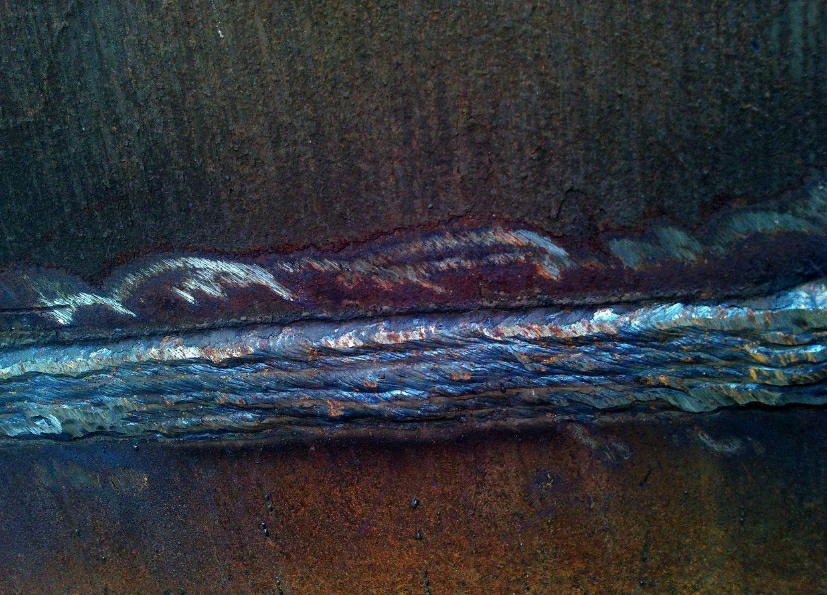A Comprehensive Overview to Identifying, Stopping, and Mending Undercut Welding Issues in Your Welding Tasks
In the realm of welding, encountering undercut problems is an usual difficulty that can jeopardize the architectural integrity and overall quality of your welding projects. Recognizing the source behind undercut welding, being able to precisely find it in your welds, and implementing efficient preventative measures are important skills for any welder. Furthermore, having the knowledge and methods to remedy undercut troubles when they do take place can make a substantial difference in the last result of your welding ventures. Remain tuned as we check out the necessary components of identifying, preventing, and fixing undercut welding problems, giving you with beneficial understandings and strategies to raise your welding abilities to the following degree.
Typical Reasons of Undercut Welding
Undercut welding, a typical concern in welding processes, can be created by various elements that need to be meticulously recognized and addressed to guarantee the stability of the weld joint. One of the key causes of undercut welding is excessive heat input.
One more typical root cause of undercut welding is incorrect welding strategy. Inadequate manipulation of the welding torch or gun, wrong angle or range between the work surface and the torch, or inconsistent traveling rate can all add to the development of undercut. In addition, utilizing the wrong welding consumables or electrode dimension for a specific joint arrangement can cause undercut problems. Determining these origin and carrying out corrective steps is important in preventing and remedying undercut welding issues in welding projects.
Identifying Undercut in Welds

To determine undercut accurately, proper lighting and magnifying tools are necessary to examine the weld joint extensively. Making use of devices such as a welding scale or a magnifying glass can help in spotting even the tiniest undercut blemishes. In addition, running a finger or a finger nail along the weld joint can often disclose undercut, as the surface area may feel unequal or have a dip where the undercut exists.
Safety Nets for Undercut
Having a deep understanding of the reasons for undercut in welds permits the implementation of effective preventive measures to maintain weld high quality and stability. One important safety net is correct weld joint preparation. Guaranteeing that the edges are clean, cost-free of pollutants, and properly beveled can substantially lower the probability of undercut (Preventing weld undercut). In addition, choosing the suitable welding criteria, such as voltage, current, and take a trip rate, is necessary. These setups ought to be maximized to protect against extreme warmth input, which can bring about damage development.

Strategies for Dealing With Undercut

To deal with undercut concerns successfully, welders can employ details techniques focused on fixing the problem and restoring the stability of the weld joint. One strategy is to readjust the welding specifications, such as the voltage, present, and travel rate, to make sure proper warm input and fusion. Increasing the welding existing or reducing the traveling speed can aid complete the undercut. In addition, altering the welding method from a press to a drag or the other way around can also assist lessen undercut.
An additional technique is to make use of a weaving movement while welding to guarantee proper sidewall combination and fill in the undercut. By oscillating the welding arc from side to side within the weld joint, the welder can deposit more filler material right into the undercut locations, effectively getting rid of the issue.
Moreover, grinding out the undercut and rewelding the joint can be a practical option for more extreme undercut issues - Preventing weld undercut. This process includes removing the undercut area, preparing the base steel, and after that rewelding the joint with proper welding criteria and strategies to avoid undercut from persisting

Expert Tips for Staying Clear Of Undercut
Using proper welding techniques and preserving control over essential welding specifications are crucial strategies for welders aiming to prevent undercut in their weld joints. In check this site out addition, selecting the suitable welding procedure and filler steel for the details application can help protect against undercut. Maintaining a constant travel rate during the welding process is one more important suggestion to stop undercut.
Conclusion
In conclusion, determining, avoiding, and taking care of undercut welding troubles in your welding tasks is essential for making sure solid and sturdy welds. Preventing weld undercut. By recognizing the common reasons for undercut, being able to recognize it in welds, applying preventive procedures, and utilizing appropriate techniques for dealing with undercut, you can avoid possible concerns and develop top notch welds. Following expert ideas for avoiding undercut can aid you improve your welding abilities and create much better lead to your projects
Undercut welding, an usual issue in welding procedures, can be caused by various elements that require to be very carefully determined and addressed to make sure the honesty of the weld joint. In addition, go right here running a finger or a fingernail along the weld joint can sometimes reveal undercut, as the surface area might feel unequal or have a dip where the undercut exists.
Utilizing appropriate welding techniques and preserving control over key welding specifications are essential strategies for welders aiming to protect against undercut in their weld joints.In verdict, determining, preventing, and fixing undercut welding issues in your welding jobs is critical for guaranteeing strong and long lasting welds. By recognizing the usual causes of undercut, being able to recognize it in welds, executing preventive steps, and making use of correct strategies for taking care of undercut, you can prevent potential issues and produce high-quality welds.
Comments on “Step-by-Step Guide to Preventing Weld Undercut in Different Metals”